
Impressions/photos/PRESS RELEASE
Introducing the New SRAM HS2 Rotor
Rotors can really ruin your day. If you've ever contaminated your pads and/or rotors you've likely had the experience of brakes that shudder and have little power or modulation. This ordeal emphasizes the influence our rotors have over our ability to control our bikes. You may have noticed that Shimano goes to great lengths, particularly with their top of the line rotors, to make them cool faster and stop better. Materials are combined, complex shapes are used, and coatings are applied, all to keep rotors cool. Until recently, SRAM has produced rotors that are entirely flat, made of uncoated stainless steel and the same thickness throughout.
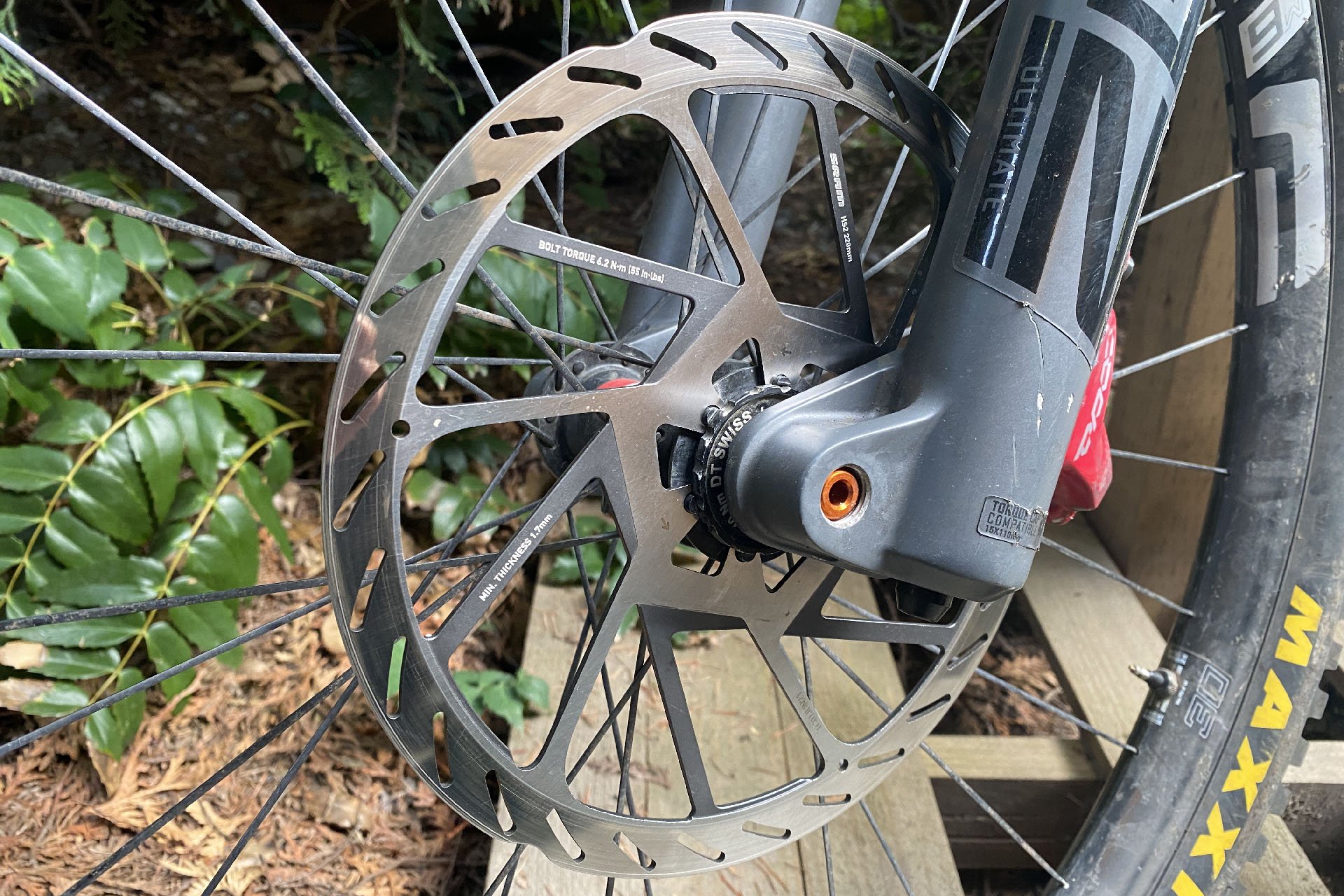
I'm a fan of 220mm rotors in general, and these could ramp up the advantages they provide. Photo - Cam McRae
Cam's First Impressions of the new SRAM HS2 Rotor
The HS2 is the first to offer a thicker 2.0mm rotor with alternating narrower 1.7mm coated spokes for increased heat dissipation. I rode them on the same trail in relatively short order to get a decent sense of any differences between the two.
The rotors, paired with new pads, bedded in quickly and easily and the first thing I noticed was a quieter application. The other rotors weren't brand new but I was comparing SRAM's original rotors in 220/200mm size on Code RSC brakes to control other variables. Conditions were similar as well.
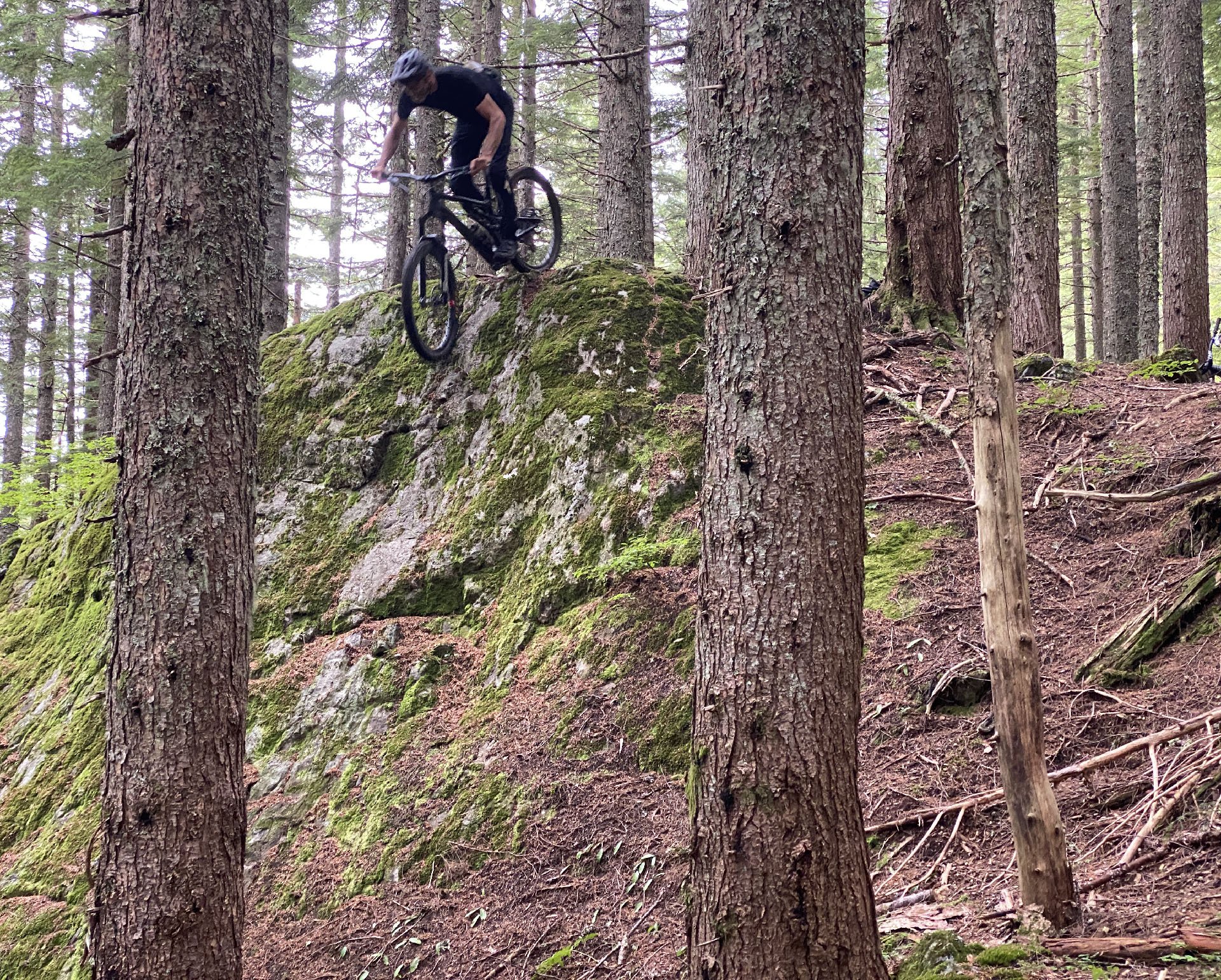
SRAM's Chris Mandell doing a little HS2 rotor testing. Photo - Cam McRae
I have been very impressed with the long term performance of SRAM's Code RSC brakes in general, but I was still able to notice an increase in power, with no loss of modulation. On the long, rough, and sustained downhill I also experienced less hand fatigue likely because it felt like I was able to slow the bike with less hand strength.
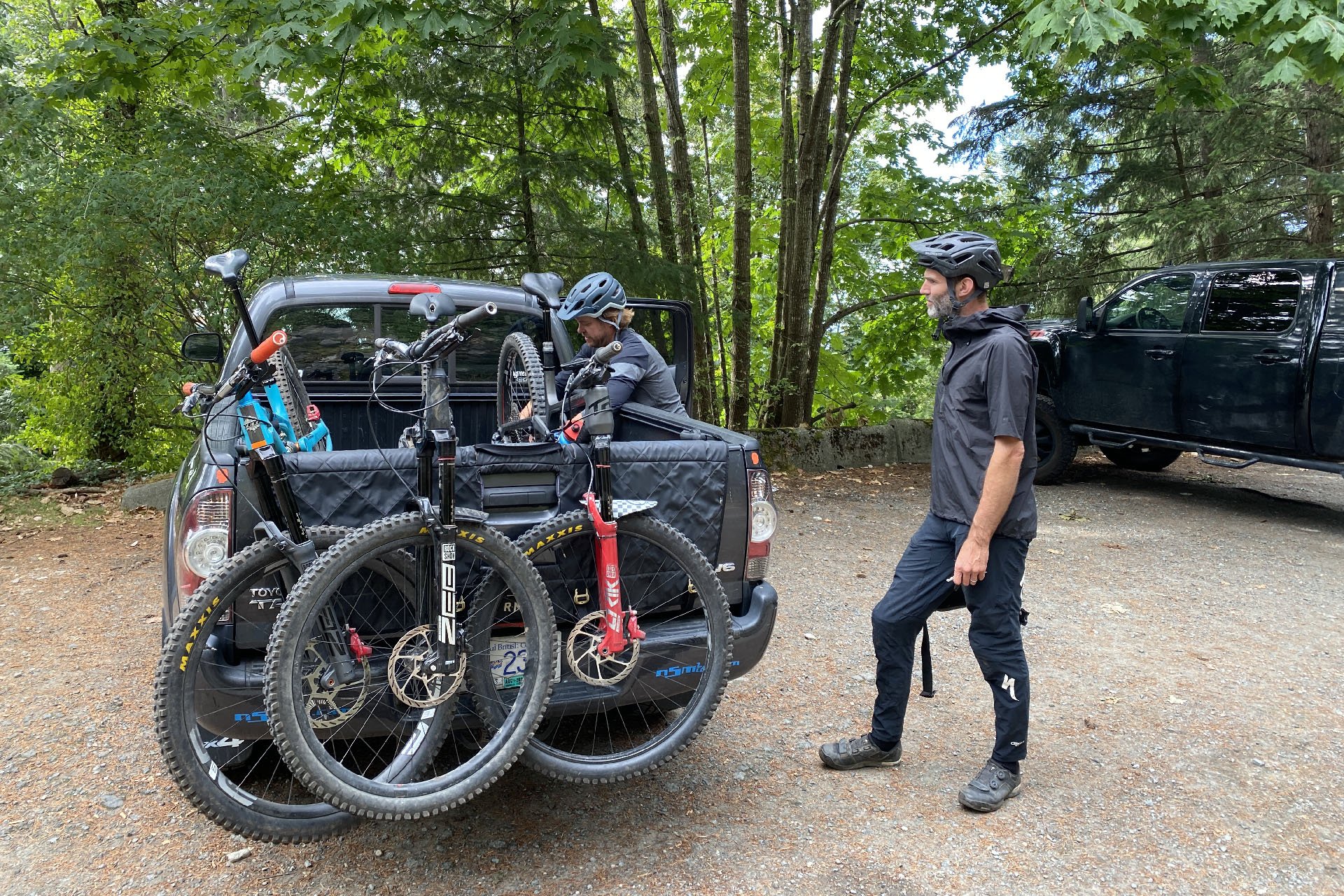
All geared up with new rotors and pads. Photo - Cam McRae
This assessment wasn't as controlled as I'd like, and the conditions were relatively dry, but I am encouraged by the early results. I have found that SRAM's stock rotors with SRAM pads are often quite noisy in the wet and I'm looking forward to determining if these provide any advantage in this regard.
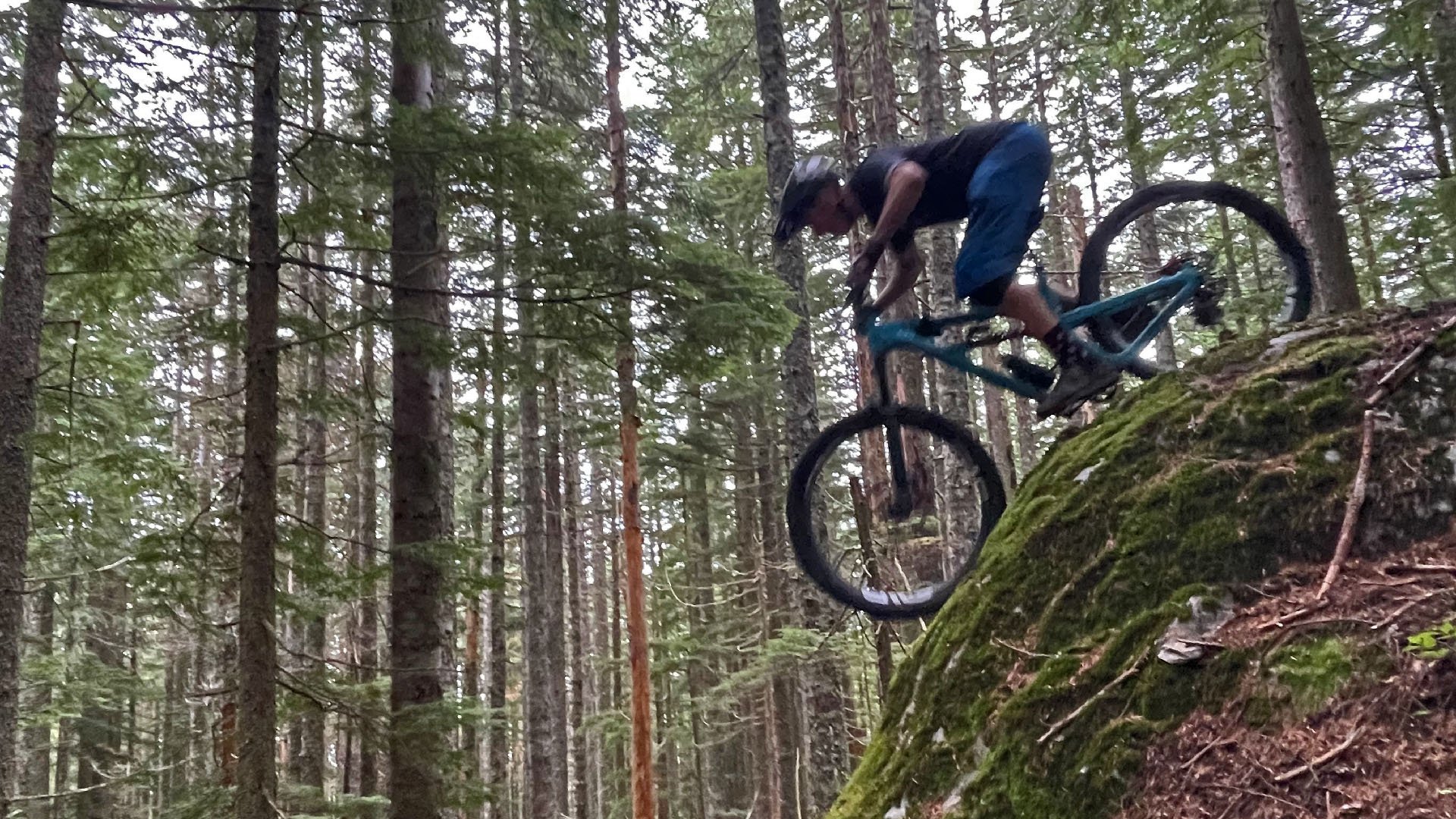
Improved braking can encourage you to carry more speed into tight situations and get you out of trouble. Photo - Pete Roggeman
For riders who regularly tackle steep and burly terrain, improved power and modulation can make a massive performance difference for a reasonable cash outlay and I'm keen to see how these perform over a longer term.
Cam McRae
Pete's First Impressions
My first rides on the new HS2 rotors have varied from Cam's in that I've been primarily running them on the Santa Cruz Blur that I'm currently testing and riding more than any other bike. That bike came with SRAM Level brakes which, on paper, were not something to get excited about given my feeling that SRAM's Guide/G2 brakes in recent years have not been up to par for riding on the Shore. But I was wrong for this use case, and on Sechelt's admittedly less technical trails, on an XC bike, they've been consistent, modulate well, and actually quite powerful once I went to 180mm rotors. So I wasn't unhappy at all, and the new HS2 rotors bedded in quickly and have been excellent so far over about 8-10 rides. I wasn't experiencing much noise before I switched rotors, but I do think these are quieter and the approaching rainy season will help me confirm or deny that claim.
I certainly can't perceive the 7% power difference SRAM is claiming, but on a few descents here that have long downhill sections where I can carry even more speed if I get my braking points just right, the whole system is working brilliantly. Again, not that easy to attribute to the rotors per se, and I wouldn't be running out tomorrow to buy them to replace perfectly good ones I already own, but for future OE spec or rotors on your ride that need to be replaced, incremental gains like this are nice to look forward to. The fact that this is a change that applies to all of SRAM's brakes makes it a bit of a sneaky big deal for them - and for riders on SRAM brakes now or in the future.
I do have a set of the new rotors on my Transition Sentinel, which sadly hasn't been getting much ride time lately (and my comfort in the steeps has suffered as a result), but this fall will give me better opportunities to ride some longer, steeper, rougher trails and see how the heat dissipation may have improved in more challenging conditions.
(what follows is a SRAM press release)
The all new HS2 Rotor is a mountain bike specific design aimed at improving brake performance while reducing noise and increasing heat dissipation. Featuring a new brake track pattern for increased pad traction and recessed spokes with thermal dissipating paint, the HS2 is a more powerful, quieter rotor with best-in-class heat management.
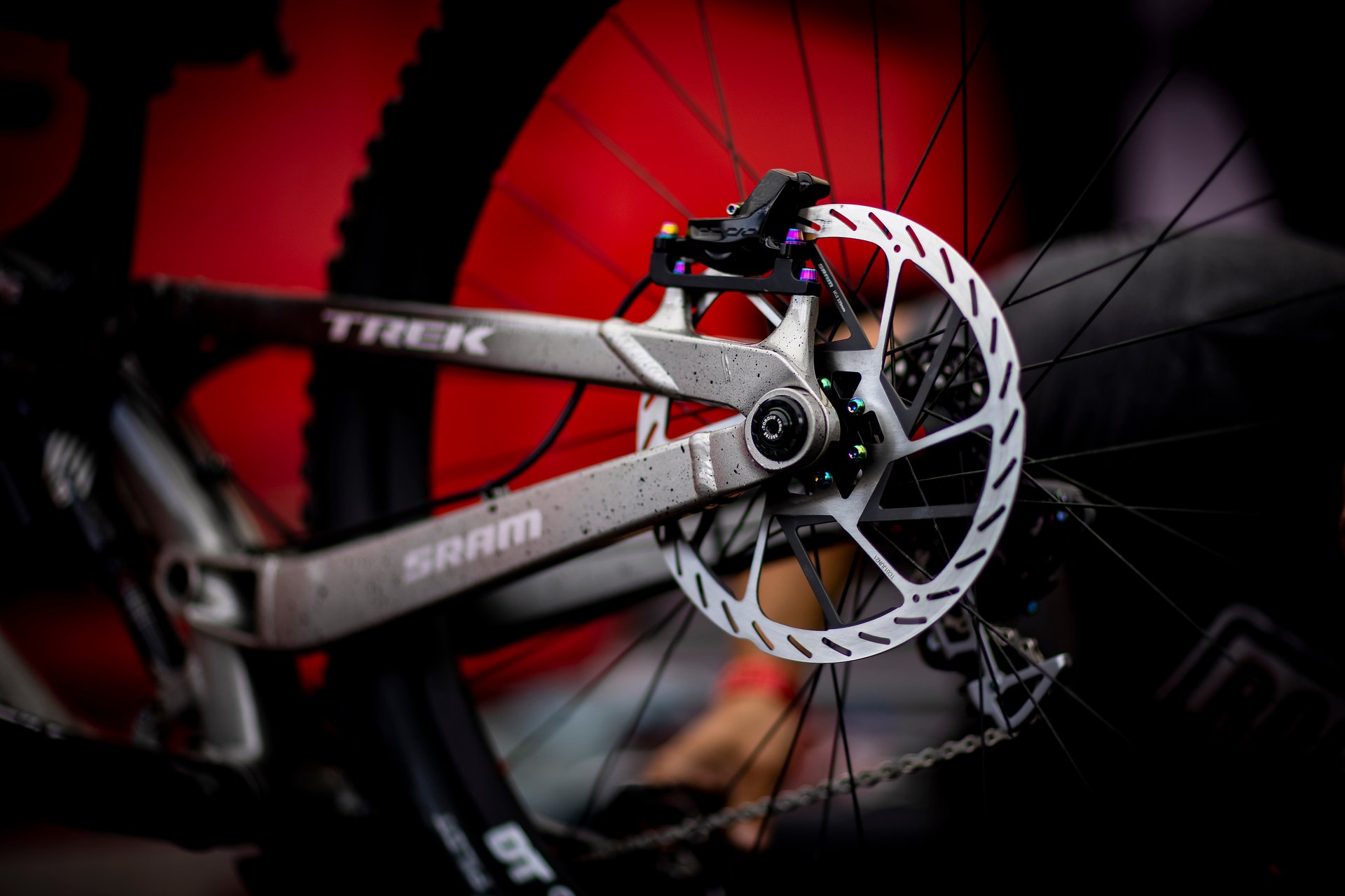
Features:
- Thicker 2.00mm rotor
- Superior heat management (40°C less than Centerline, per Garda test)
- 7% more power
- Available in 6 bolt and Centerlock
- Diameter : 160mm, 180mm, 200mm, 220mm
- Material : Steel
- MTB specific
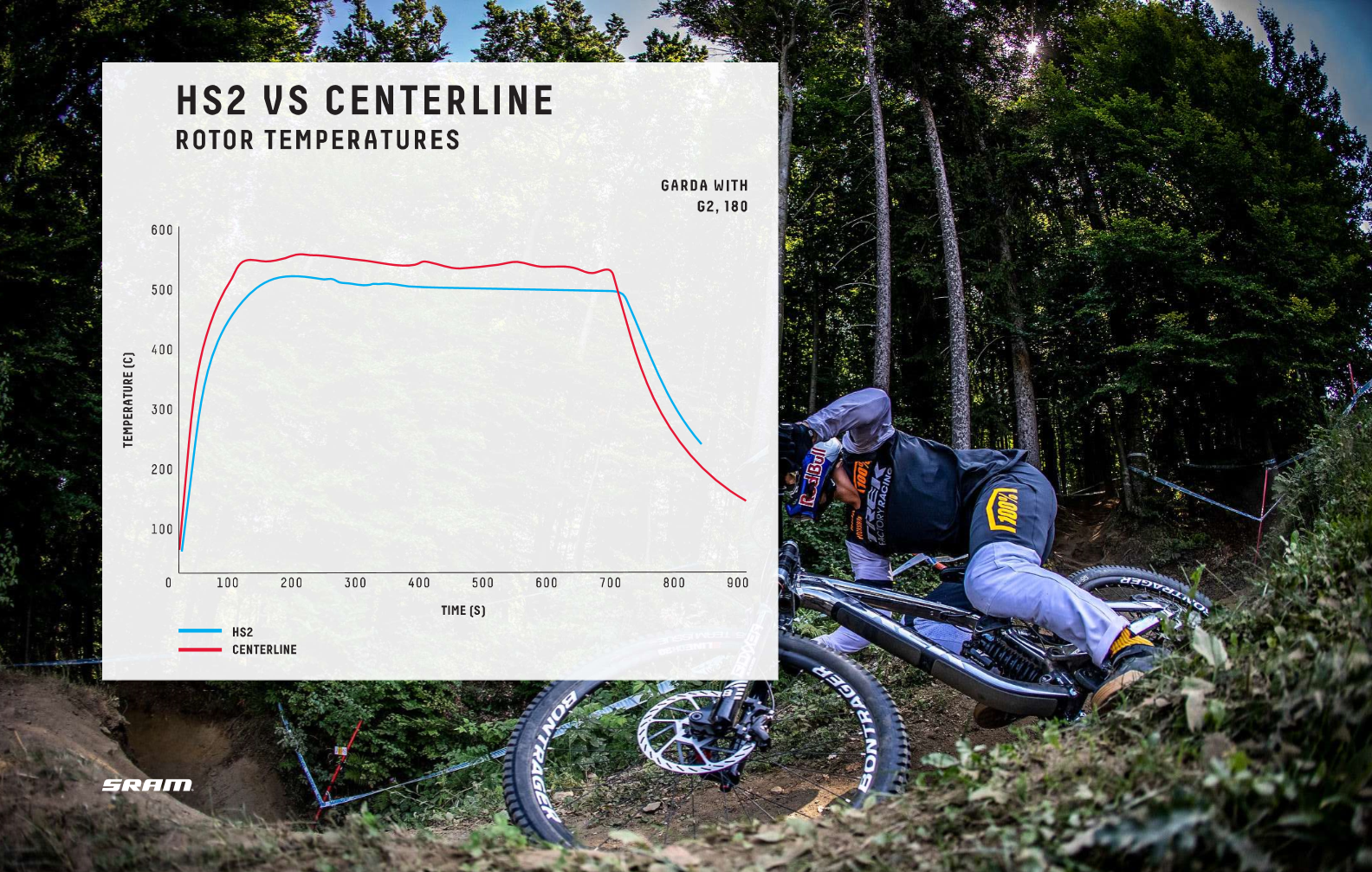
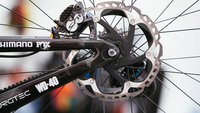









Comments
mrbrett
2 years, 7 months ago
Lotta rotor news this week.
I imagine a cigar chomping boss at SRAM in some corporate tower in Chicago with a scotch, doing a spit take when he sees the Shimano Freeza release come out. "Mathieson, get Frank on the horn. Drop the damned HS2 embargo!__" "Yes sir, right now sir ..."
Reply
Cam McRae
2 years, 7 months ago
I was curious about that as well, but it happened the other way around. We had the release and embargo date for the SRAM rotors long before the Shimano news arrived in our inboxes. The timing is either a coincidence or perhaps (very serious!) corporate espionage.
SRAM certainly wouldn't have chosen to play second fiddle.
Reply
ackshunW
2 years, 7 months ago
!!!? Can it really be true mtb rotors reach 1000 degrees (freedom units)??? That’s much much higher than I ever could have guessed.
Reply
Tim Coleman
2 years, 7 months ago
I consistently blue my rotors, and that happens at 300 °C / 600 °F. This is a neat reference: "https://en.wikipedia.org/wiki/Tempering_(metallurgy)"
I think 1000 °F would be pretty extreme, but maybe possible with a heavier rider on a long sustained steep descent.
Reply
tdmsurfguy
2 years, 7 months ago
Cam what pads were you using for the new rotors/
Reply
Cam McRae
2 years, 7 months ago
Just put some new SRAM metallics on. Keen to try them with something aftermarket.
Reply
cheapondirt
2 years, 7 months ago
It's a little bit annoying that they could have been offering 2.0mm rotors since at least 2017 (current Code design) and didn't (except in 220mm, which means this isn't news to anyone paying attention).
Reply
Cam McRae
2 years, 7 months ago
I guess that's a pitfall of a one-size-fits-all rotor program. You need to please those looking to shave grams as well as those who put stopping performance ahead of weight, so this can be seen as step in the right direction in that regard.
What are the advantages of 2.0 in your estimation? This isn't something I've devoted much grey matter to before this.
Reply
cheapondirt
2 years, 7 months ago
With the same energy put into it, a heat sink with more mass will stay cooler, reducing the chances of brake fade or glazed pads. Maybe allowing me to drag my rear brake a little longer before getting consequences.
Reply
Andeh
2 years, 7 months ago
I've noticed less warping with thicker rotors too (Magura vs. Shimano, SRAM somewhere in between), although the material of the rotor might have something to do with it also. Shimanos have always warped for me if I even look at them funny. Magura & SRAM stay true until I snag them on something.
The trueness is especially important on brakes with less rollback, like Magura. On my Codes with more rollback, true rotors just make alignment super easy.
Reply
BkrAdam
2 years, 7 months ago
The current SRAM Centerline 220mm rotors are already 2.0mm thick. I suppose I could apply some high emissivity paint to the spokes on my brake rotors.
edit:
My smaller diameter SRAM rotors are 1.8-1.85mm thick. The 220mm rotor definitely felt more solid when I put it on. I went from a well used 200mm rotor. I assumed brake pistons in the caliper were wobbling a bit less.
Reply
Cam McRae
2 years, 7 months ago
Thanks. Good detail. I guess the difference is that these are all 2.0mm while I believe smaller Centreline rotors are less thick - but I'll have to measure to be sure bcs that info isn't on the SRAM website AFAICS.
And go for it with the paint and let us know!
Reply
Cooper Quinn
2 years, 7 months ago
Most SRAM rotors are (were?) 1.8mm thick.
Reply
Ripbro
2 years, 7 months ago
Timely article, I’m looking to upgrade to a 200mm rotor in the rear. I think I might go with a magura mdr-c and save some cash.
Reply
NotMeAtAll
2 years, 7 months ago
While it's good to see Sram catch up to other brands, I'm interested in compatibility. Does this new rotor requires new caliper or it will be an upgrade for older brakes? Does shimano accept 2mm rotors too?
Reply
Cam McRae
2 years, 7 months ago
Brakes are designed to open to the appropriate thickness of the rotors they are pinching, to account for wear. I didn't even need to reset the pads when I did the swap because my rotors were relatively new. I believe Shimano should be fine, despite using 1.8mm rotors, and Magura already uses 2.0 mm rotors so that won't be an issue.
Reply
NotMeAtAll
2 years, 7 months ago
That is some good news! I knew about the self compensating system, but I though there was a maximum limit for rotor thickness.
Thanks for the answer, I'm gonna look in to these since my 203mm rubs constantly. Cheers!
Reply
ehfour
2 years, 7 months ago
Who's seen these in local shops?
Reply
Please log in to leave a comment.